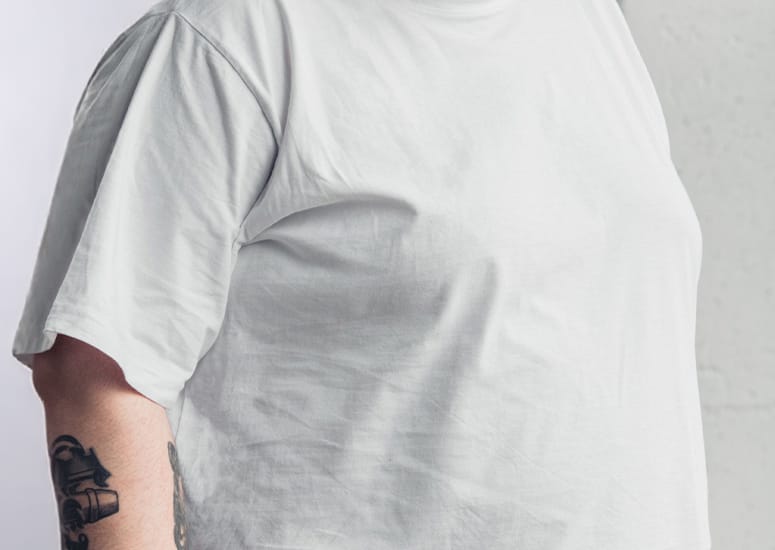
Gynecomastia Reduction
What is Gynecomastia?
Gynecomastia is the growth of male breasts. This is natural during puberty (65% of teenage men) with most of the breast tissue going away over the next several years. Later in life, usually over the age of 50, men may develop breasts with weight gain or changes in testosterone levels. Most gynecomastia cases not appearing in puberty or in an older age may not have a specific cause. Natural gynecomastia is not dangerous but can cause embarrassment and stress in social situations.
Gynecomastia that appears suddenly, not in the teenage or older years, or is one-sided, may have unnatural causes. This can be associated with drugs (example: steroids, hormones, marijuana), changes in some medication, or tumours. Your doctor will need to order tests or you may need to see a specialist in Endocrinology if this is the case.

Who Can Have Surgery?
Gynecomastia reduction surgery is considered an aesthetic surgery. Any patient who is healthy enough to be at low risk for general anaesthesia can have the surgery.
Gynecomastia reduction surgery may be insured in certain circumstances. You may discuss this in your personal consultation with your plastic surgeon.
The Surgery
Gynecomastia reduction is a “day surgery” meaning you will go home the same day of the surgery. This lasts 2-3 hours and you will be completely asleep. You may need some tests before surgery. The surgeon will meet you before your surgery to draw marks and take photographs to guide the surgery. The Anesthesiologist will meet you to discuss the safety of your surgery.
The surgery is a combination of a breast tissue removal and skin tightening if needed. You will have scars from the surgery which your surgeon will discuss with you. Every surgery is different depending on what you need to have a better shape. Liposuction may also be used to give a better shape. Nipple numbness may occur as the nerves are removed with the breast tissue.
After Surgery
When you wake up you will have tapes and gauze pads over the breasts. There will be drains from the surgical site. You will either be taught how to empty the drains, or nursing care will help. The drains will be removed either by community nurses or at your surgeon’s office. A tensor wrap, or surgical “vest”, is placed over the chest for 2 months to flatten the skin. During this time it is important to refrain from heavy chest work-outs for best results. Usually 3-4 weeks are needed to fully recover. You can return to work sooner if you feel well enough. Your surgeon will see you during the recovery period to ensure you are healing and start scar therapy.

Book a Consultation
Schedule your personal consultation with Dr. Lee to talk about Gynecomastia Reduction surgery.
Discover the Possibilities by Viewing Our Before and After Gallery

